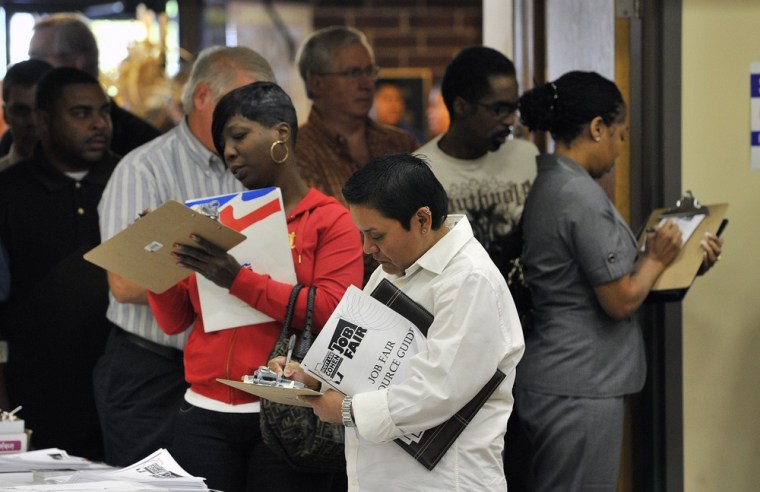A wave of government layoffs in September outpaced weak hiring in the private sector, pushing down the nation's payrolls by a net total of 95,000 jobs.
The unemployment rate held at 9.6 percent last month, the Labor Department said Friday. The jobless rate has now topped 9.5 percent for 14 straight months, the longest stretch since the 1930s.
The private sector added 64,000 positions, the weakest showing since June.
A net total of 159,000 government jobs were lost in September. Local governments cut 76,000 jobs last month, most of them teachers. That's the largest cut by local governments in 28 years. About 77,000 temporary federal census jobs ended and state governments shed 7,000 jobs.
The cuts reflect the toll the recession is taking on state and local government budgets. Falling home values are just beginning to push down local governments' property tax revenues. Most state and local governments are required to balance their budgets, which means drops in revenue are forcing cuts in services.
Nearly 14.8 million people were unemployed last month. That's almost 100,000 fewer than in August.
Speaking at a press event held as he toured a small business in Bladensburg, Md., Friday President Barack Obama stressed the private sector job gains in September, but conceded that those gains were tempered by significant state and local government job losses.
“We have to do everything we can to accelerate this recovery,” Obama said. “Yes, the trend line is moving in the right direction, but I’m not interested in trend lines, just the hardworking Americans behind them.”
The government needs to explore ways to help state and local governments keep workers who provide vital services, he added.
“These continuing layoffs of state and local government ... would have been even worse without the federal help that we've provided to states in the last 20 months,” Obama said.
Mark Zandi, chief economist at Moody’s Analytics, said in an appearance on CNBC Friday that the “onus is on the Federal Reserve — to engage and provide more monetary easing” to stimulate economic growth.
Weak job growth will likely force the Fed to take further steps to boost the economy. Most economists expect the central bank to act next month to buy government debt to try to lower interest rates and spur more borrowing.
However, Fed officials could wait until December before making any decision to ease monetary policy further if they feel they need more clarity on the outlook, St. Louis Fed President James Bullard told CNBC.
“We did hit this soft patch in the economy but it's not so soft that it's obvious that you have to do a lot right now,” Bullard said. “It's still possible to make the case that the economy will improve naturally in 2011.”
Friday’s September jobs report is the final monthly jobs report before the midterm congressional elections. The report is likely to leave President Barack Obama in a precarious position: Democratic members of Congress will face voters with unemployment above 9.5 percent.
Economists see few signs that the jobs situation will improve anytime soon.
“There's not much growth going on in the economy right now, so that doesn’t give employers much reason for hiring,” said Nigel Gault, an economist at IHS Global Insight.
Gault said he expects the pace of job creation to remain similarly weak for the rest of this year. Some economists say the unemployment rate could top 10 percent by next year.
The economy expanded at a scant 1.7 percent annual rate in the April-June quarter. Most analysts think growth was similarly weak in the July-September quarter.
Since the recession ended in June 2009, the economy has grown 3 percent, according to economists at Deutsche Bank. That's less than half the average 6.5 percent pace in postwar recoveries.
Some encouraging signs for the economy emerged in government reports issued Thursday. For the fourth time in five weeks, fewer people applied for unemployment benefits. The number who did so fell to the lowest level since July.
And job openings rose in August for the second-straight month, to 3.2 million.
But neither figure is strong enough to signal broad gains in job creation. Employers advertised 4.4 million job openings in December 2007, when the recession began.
“The data that we’re seeing [are] still consistent with a very slow jobs recovery,” said Michelle Meyer, an economist at Bank of America Merrill Lynch.
